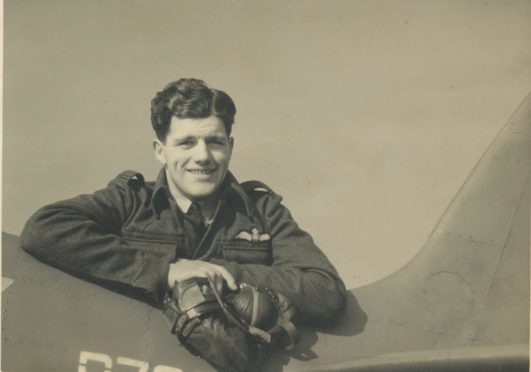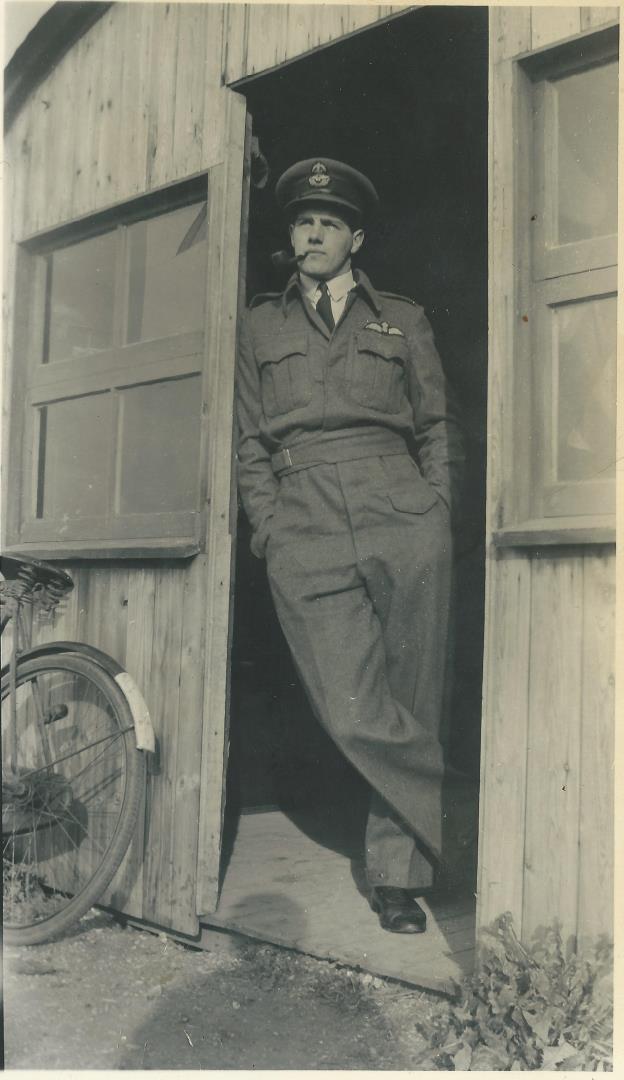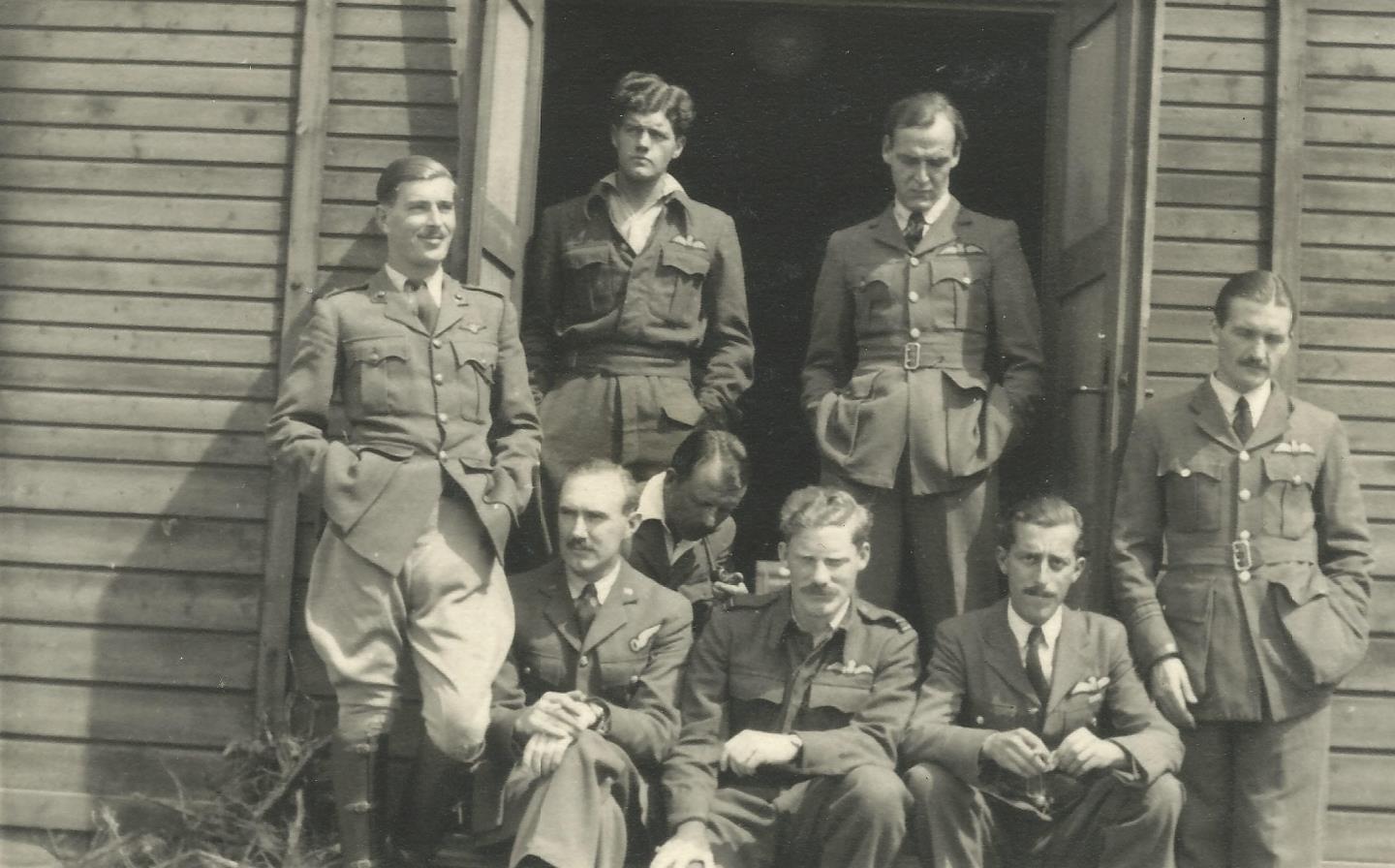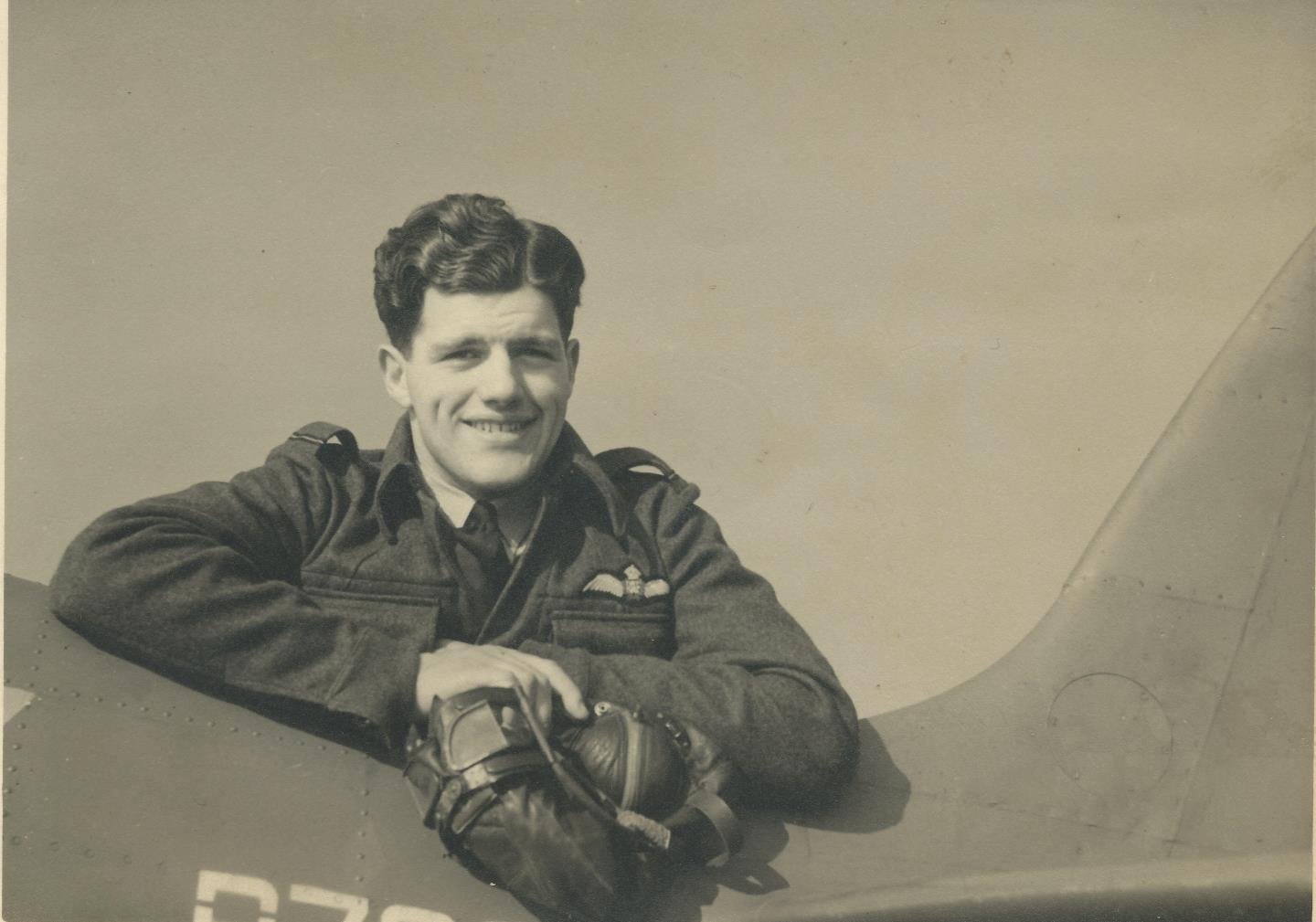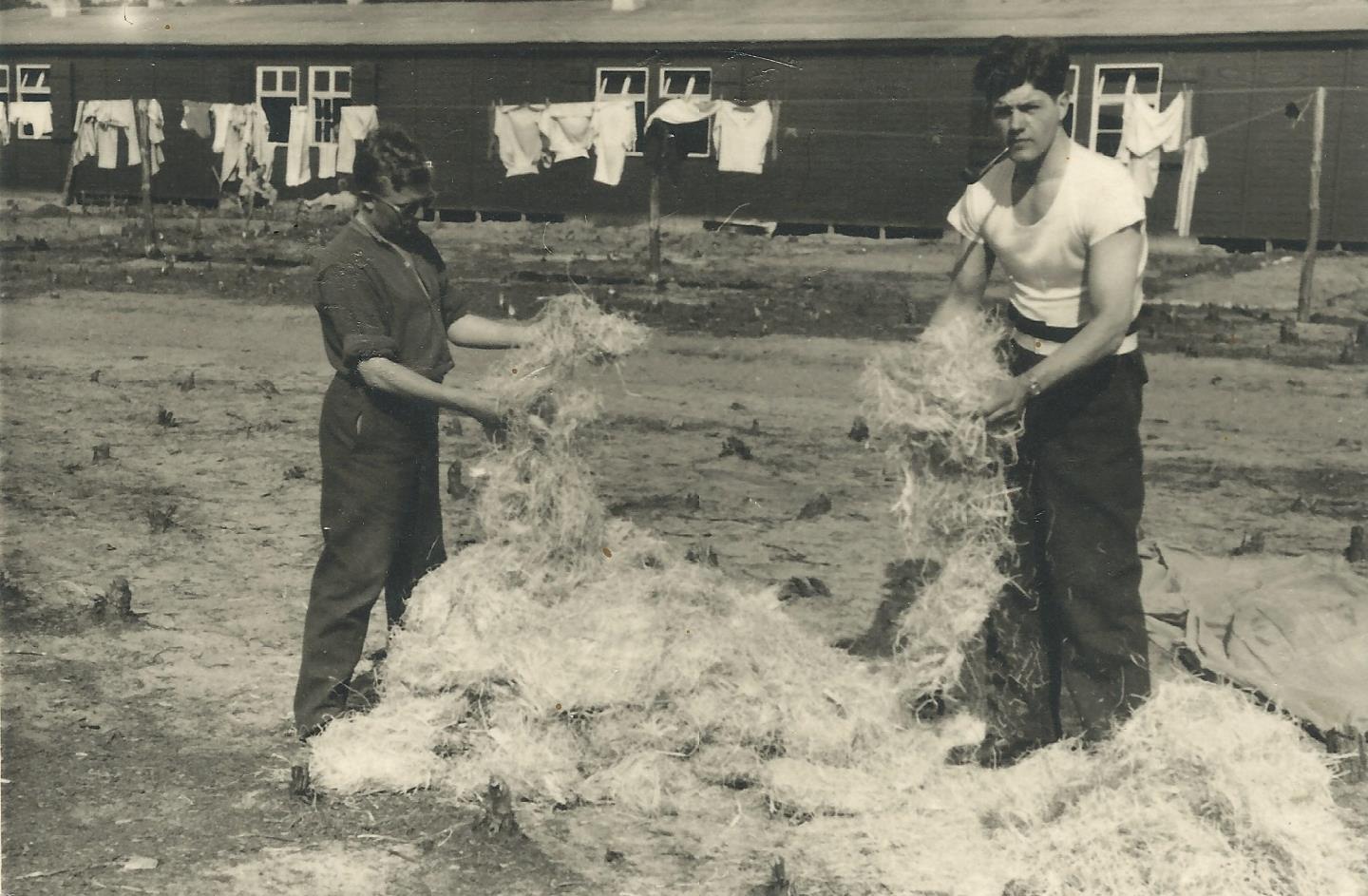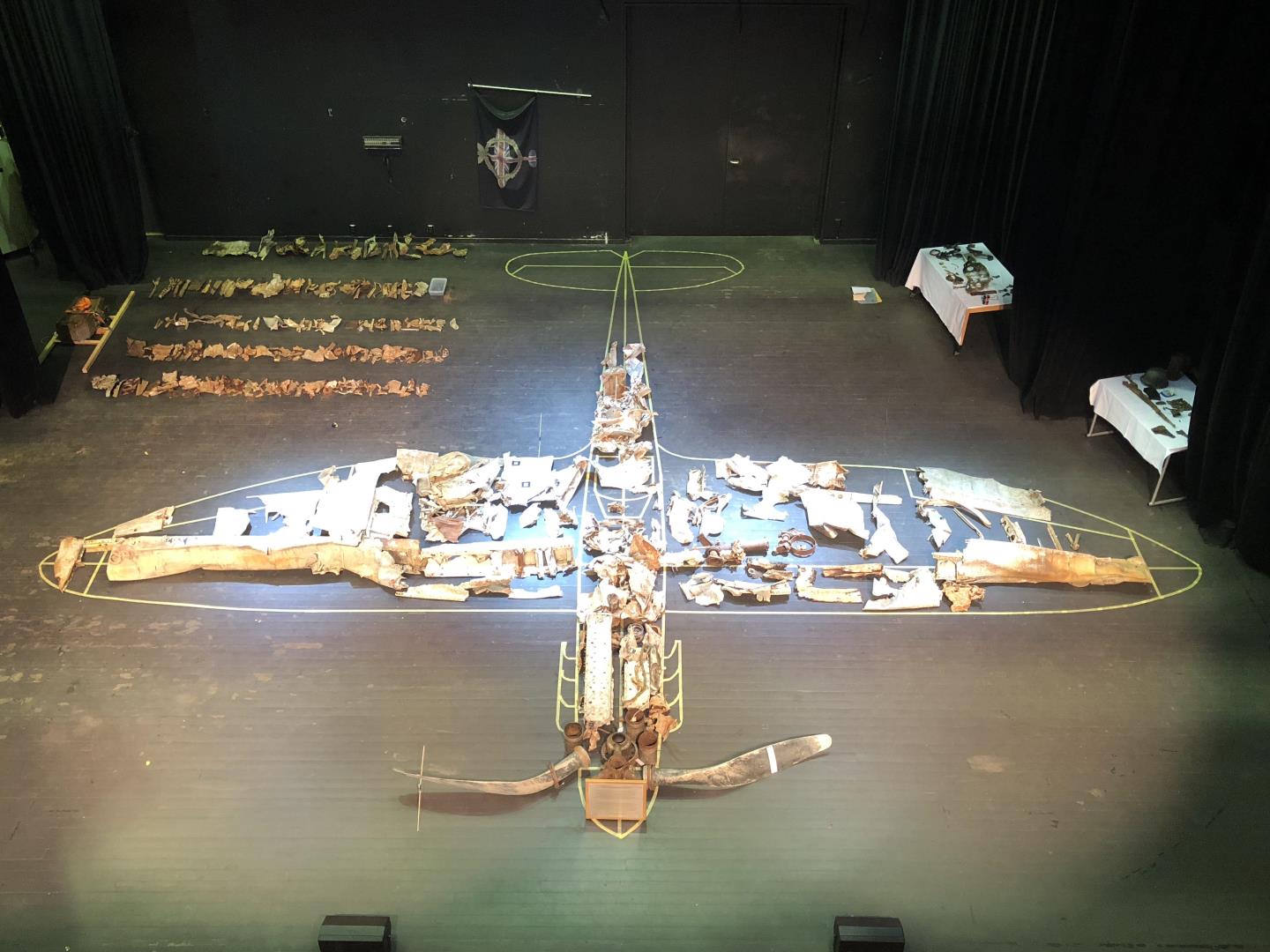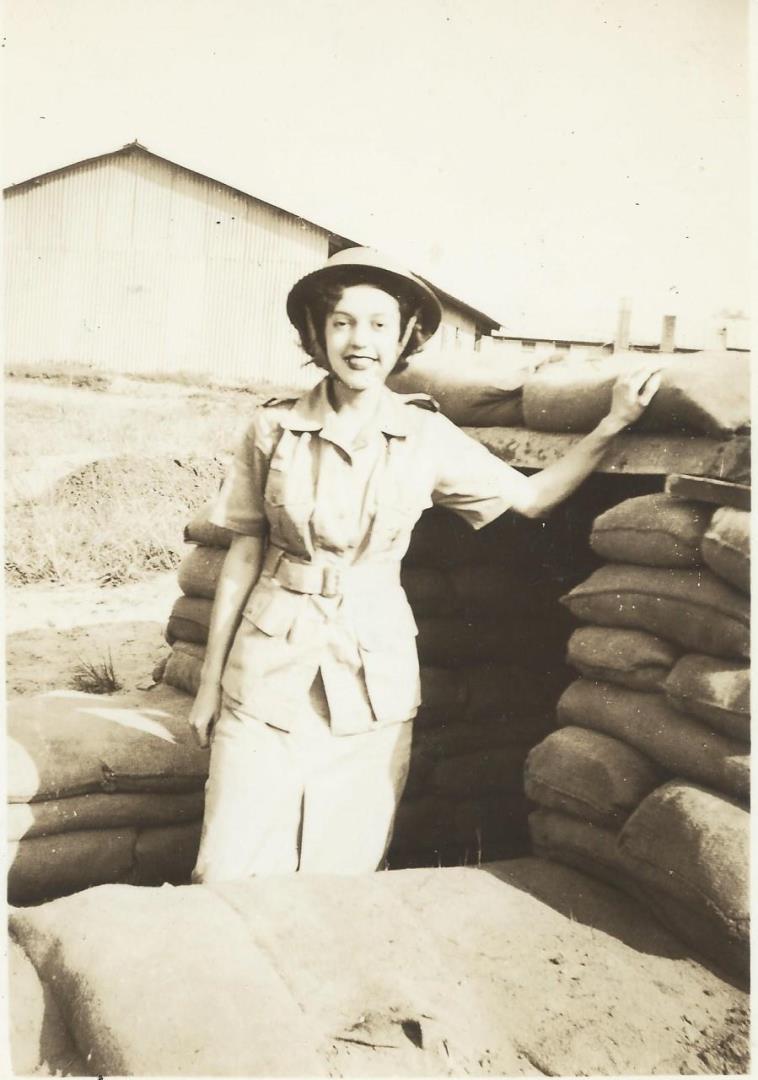On March 5 1942 Spitfire AA810 was shot down by a pair of Messerschmitts over Norway, as Auchterarder pilot Alastair ‘Sandy’ Gunn attempted to photograph a German battleship.
Miraculously he survived, but became a prisoner of war, and two years later he would be murdered by members of the Gestapo for his part in the Great Escape.
More than 75 years later, the aircraft’s wreckage was found and recovered from Norway.
It was returned to the UK where a team – headed up by Sussex aircraft engineer Tony Hoskins – is now fundraising and taking on the massive task of restoring the Spitfire in the hope it could take flight once more in 2024.
The team have spent the last 18 months researching the AA810 and Sandy’s life, and now hope to track down Sandy’s potential love interest known only as Penny, from a photograph found in his personal effects.
Flight Lieutenant Sandy Gunn
Born the son of a doctor and living in Auchterarder, Flight Lieutenant Alastair Donald Mackintosh “Sandy” Gunn and his older brother Hamish excelled in sports.
The duo proved themselves at Fettes and Cargilfield Schools in Edinburgh where Alastair rose to become a senior prefect and captain of both the cricket and rugby teams.
After leaving school, he decided to take on an apprenticeship at Harland and Wolff shipyards in Glasgow before taking an academic break entering Pembroke College at Cambridge to read Mechanical Sciences.
With the clouds of war looming, Alastair signed up to the RAF Volunteer Reserve, being called up to serve his country in June 1940.
After being called to service, Sandy was trained at RAF Ansty near Coventry and was moved quickly from biplanes into Fairey Battle aircraft.
He was then posted to what is now Blackpool Airport to convert to Avro Anson aircraft for Coastal Command Convoy patrols.
By July 1941 Alastair was operational, flying missions protecting the incoming convoys of food and supplies from the USA.
He was moved to Stornoway were he proved himself an excellent navigator over large expanses of water, so much so, that he came to the attention of his commanding officers and was selected for a life in the Photo Reconnaissance Unit (PRU).
Arriving at RAF Benson in September 1941, he learned to fly the Spitfire, and within just a handful of flights, he was off to targets in Germany and Denmark gathering intelligence on the dockyards and ship movements of the German Kriegsmarine.
Much of Gunn’s flying involved dangerous long-range PRU missions photographing German naval units along the Norwegian coast and in the North Atlantic.
By January 23 1942, the German battleship Tirpitz was found in Trondheim Harbour.
Enigma intelligence suggested that the ship was likely to move at any time, and the Luftwaffe presence was building.
Shot down over Norway
It was the 113th PRU mission to monitor German battleship Tirpitz that would prove to be his downfall.
At 8.07am on March 5 1942, Spitfire AA810 piloted by Sandy took off from RAF Wick across the North Sea to Fættenfjord in the north of Norway.
Unfortunately, it was Sandy’s first mission to be successfully intercepted by the German air force.
AA810 was shot down by a pair of Messerschmitt Bf109s defending the air over the fjord.
Sandy was unaware that the Germans had installed a new listening post at Kristiansund near the Trondheim Fjord, and Luftwaffe pilots Dieter Gerhardt and Heinz Knoke had been scrambled.
At that point, Heinz attacked, hitting the oil cooler on Gunn’s AA810.
Dieter then swooped in, firing round after round at the stricken Spitfire.
One struck Sandy’s starboard wing tank, setting it ablaze.
Sandy had no choice but to bail out of his aircraft.
In a move that likely saved his life, the Spitfire crashed moments later, and despite suffering facial injuries and other burns, he survived.
Sandy realised a 110-mile hike to the safety of the Swedish border was not an option, so he surrendered and became a prisoner of war.
Stalag Luft III
After three weeks of interrogation by the German military, Sandy was transported to Stalag Luft III, a Luftwaffe-run Prisoner of War camp in Poland.
The camp was immortalised by two break-outs, most notably the now famous Great Escape which was carried out in March 1944.
Sandy would be part of this mass escape, digging two of the three famous tunnels, and leaving with 75 of his colleagues in the dead of night. Only three would be successful.
He would be on the run for just over 36 hours before once again being captured.
Handed over to the Gestapo and transported to Gorlitz, Sandy would tell the story of escape to comrades in the cells while they faced repeated questioning from the interrogators.
Slowly prisoners were called forward and left the cells.
On the morning of April 6 1944 Sandy’s name was called.
Taken from the prison, Sandy was driven away by car, and on the road from Gorlitz to Breslau (now Wroclaw) Sandy was executed by an unknown Gestapo officer.
He died aged just 24.
Retrieving Spitfire AA810
Nearly 75 years later, Sandy’s Spitfire was discovered embedded in a peat bog on a remote mountainside near Surnadal in Norway.
A rescue operation was launched.
Fragments of the aircraft were carefully excavated and extracted, and driven back to the UK.
Researchers found the plane had been hit by more than 200 machine-gun bullets and around 20 rounds of cannon fire.
Before it hit the ground at a shallow angle, its engine had stopped and the right-hand side, nose, and cockpit were alight.
Now a team of enthusiasts led by Tony Hoskins are restoring the Spitfire with as many original materials as possible in the hope that the Spitfire will fly again as a memorial to the 305 known PRU pilots.
Inside the top cowling of AA810 will be a tribute to all the pilots, bearing the names of the 77 who were killed, the 19 PoWs and 74 who were detailed as missing in action.
The public can also have their names immortalised within the plane too as part of fundraising efforts by the group.
As well as the restoration of the Spitfire, Sandy and his fellow PRU crew mates are also set to be remembered by a monument which is to be built in their honour in St James Park, London.
Finding Penny
While Sandy’s aircraft might have been found, another mystery has surfaced.
Among his papers returned via the Red Cross after his murder was a photo of ‘Penny’.
It carries a camp censor’s stamp indicating that the photo would have accompanied a letter, but the letter has never been found.
Tony, who has been working alongside other researchers trying to find the identity for the past 18 months, said: “Was this a love left behind in the UK, an admirer? A girlfriend? A fiancé?
“Sandy had kept a diary through his RAF service but nowhere does it mention this mysterious girl, although it was well recorded that he did come into regular contact with the photo interpreters and WAAFs of Medmenham, as well as at RAF Benson and his last base at RAF Wick.
“Studies of the photograph has led to a few observations that Penny is obviously in the military and at the time of sending the photograph appears to be in either a Middle East, Far East or Mediterranean theatre of operations.
“Her uniform is not standard WAAF but as a member of the RAF Intelligence Department this would not be uncommon, and it is known that photo interpreters were moved around all the conflict zones in which the PRU operated.
“It has always been believed that the pair met either socially in Henley or Benson, or more likely in his deployment to Wick in Scotland, however, it can’t be ruled out that she might have been a childhood romance from his time in Auchterarder.
“Her photo arrived in Sandy’s last post intake in January of 1944, his subsequent letter home on the March 19 was to his parents with no mention of Penny.
“Did she receive a final letter from him?
“Did she ever know why he never came home from the war or why she never heard from him again?
“If Penny is still with us today she would be around 100, it is limited information to go on, but can we find Penny?
“It may be that Penny was posted as part of a group of 10 experienced photo interpreters to Algiers in February of 1943.
“This unit was run by the Americans under the command of Elliott Roosevelt and was called the North African Central Interpretation Unit with a mixture of English and American staff.
“Those WAAFs from the NACIU were transferred to the Mediterranean Photographic Intelligence Center at San Severo near Foggia in Italy in January 1944.
“I highly suspect Penny was in this group and that the photo sent to Sandy was probably taken in Algiers and sent to him before she left for Italy.
“She would therefore still have been abroad when VE Day occurred and would likely have been unaware of the murder of the officers from Stalag Luft III.
“It is equally possible that having not heard from Sandy she may have met an American serviceman and moved to the USA. Could Penny be in America?”
If you have any information on who Penny could be or are interested in learning more, or becoming part of the Restoring Sandy’s Spitfire project visit the project’s website here.
See more like this:
